Mysterious black objects appear in NASA sun photos
More modern technology means sharper photos. Now people can not only watch the Sun from afar, but also see the Sun up close, in detail with the sharpest possible resolution.

Recently, the Solar Orbiter spacecraft - a joint project of the European Space Agency (ESA) and the US Aerospace Agency (NASA) has captured images when moving around orbit from the surface. The sun is about 77 million kilometers, about half the distance between the Sun and the Earth.

This is a photograph of the Sun at the closest distance ever, whereby researchers observe dozens of small light trails of the Sun, known as "campfires". Previously, the Sun and Japanese Book Observatory (SOHO) project, a solar research satellite since 1995 has been feverish by the discovery of a strange object from close-ups of this giant fireball.

Accordingly, observing the latest image taken by SOHO, it can be seen that a black square exists in front of the Sun with the size of a dozen times the size of the Earth. This image is widely rumored to be an "unidentified flying object" that flies across the Sun for an unknown purpose.
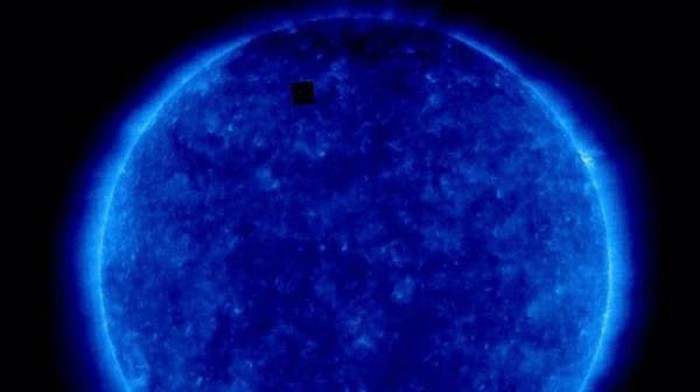
However, shortly after Bernhard Fleck, the scientist and project leader of the SOHO, explained: `` Obviously, these statements are completely absurd. This black square appears due to an error in part of the remote Sun measurement data. ''
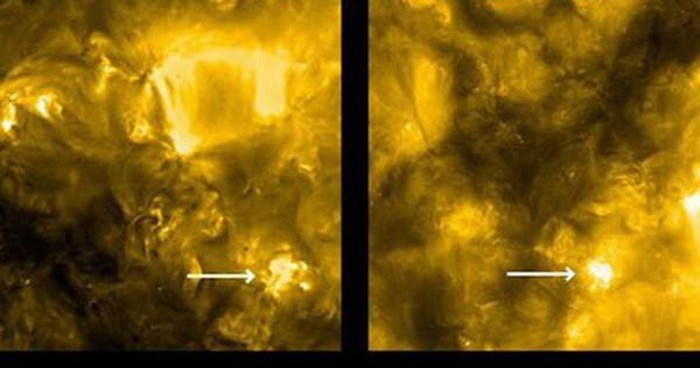
He explained that the close-up image of the Sun was broken and lost several pixels when the signal was transmitted from SOHO to Earth at a distance of 1.5 million km. "I can send you a few dozen, if not a few hundred similar photographs, with UFOs that are bigger than that," Mr. Fleck said.
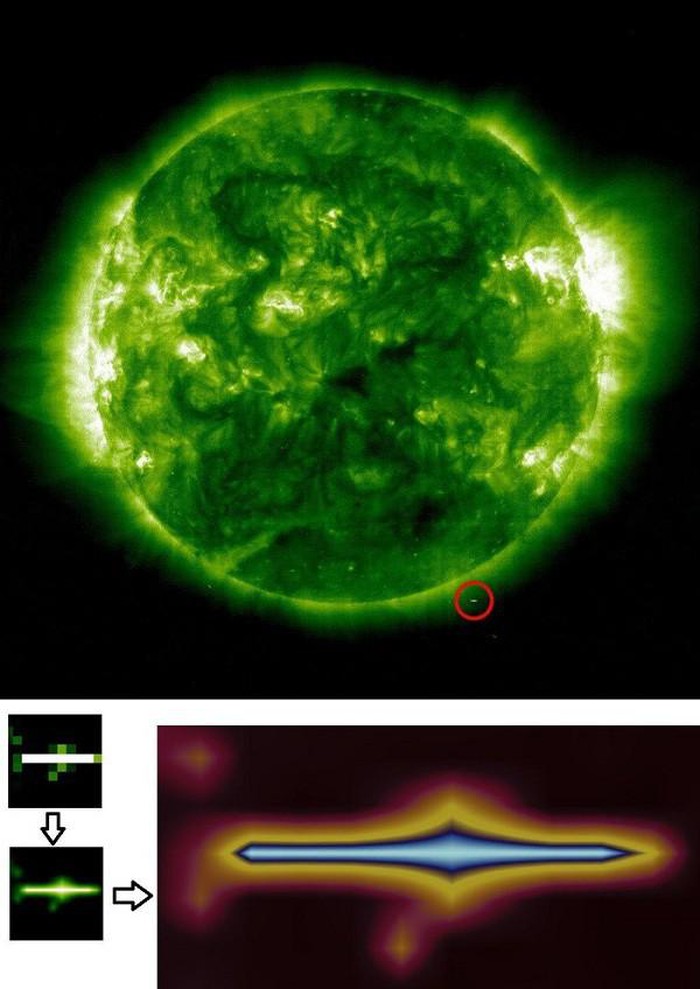
In 2003, in a post about viewers often mistaking natural phenomena in images of unidentified flying objects, NASA said: `` Since the launch, many people have claimed to look. see a UFO or mysterious object in a SOHO image. But they are just normal things. ''
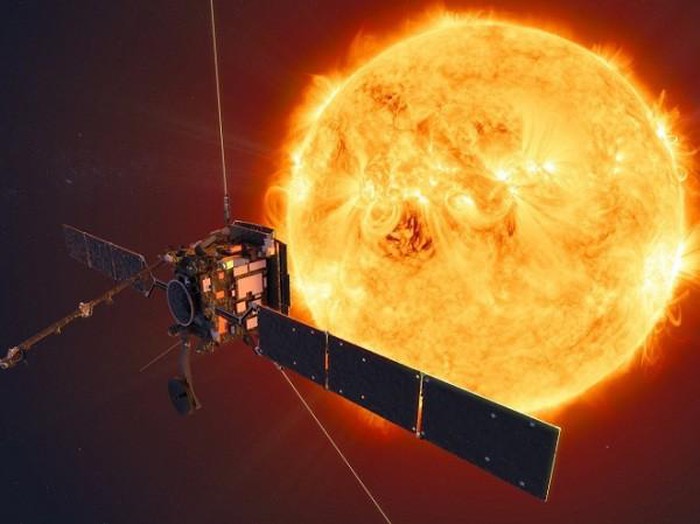
Seeing strange flying objects or UFOs is really just a human imagination based on similarly sized images.
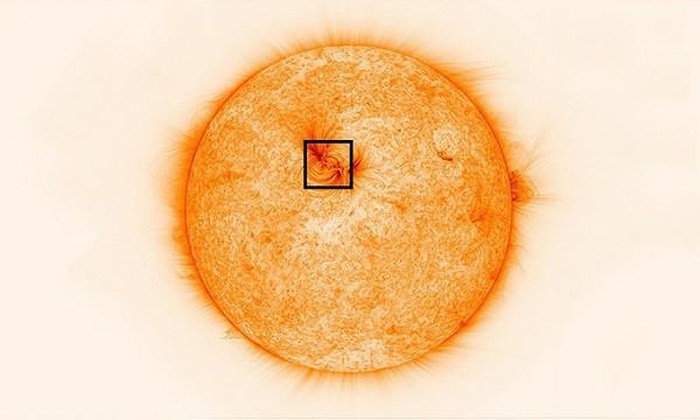
2020 is likely to be the year of cosmic achievements when telescopes and satellites are constantly taking the closest pictures to the Sun as well as the most detailed Sun pictures ever.
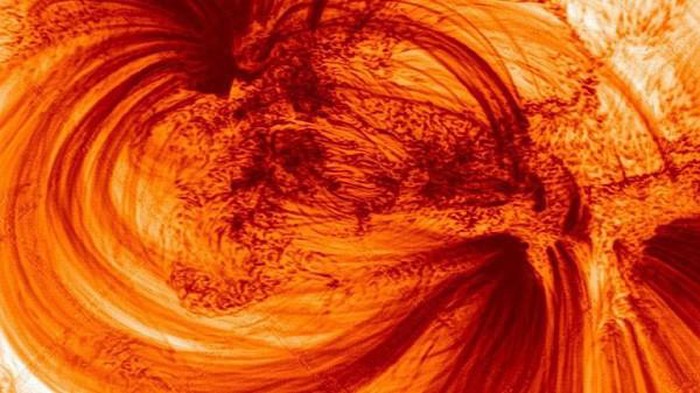
In April this year, NASA announced a series of close-up Sun photos taken with a Hi-C coronary telescope. The image shows a portion of the Sun's atmosphere, previously thought to be dark and empty, filled with charged bands of hot gas.
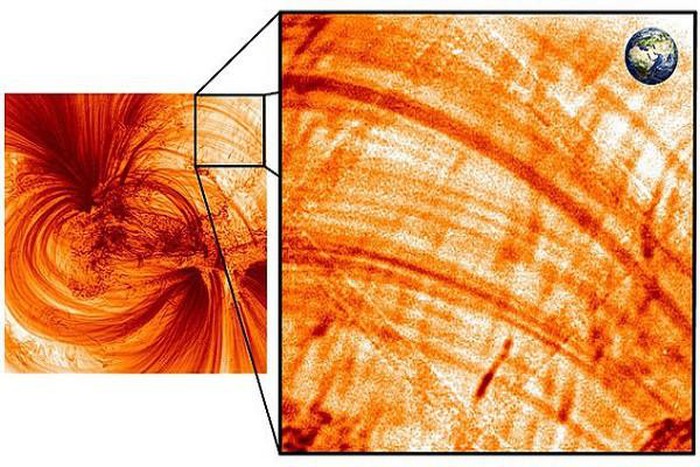
A structural close-up zoom in the Sun's atmosphere detects heat bands in the "dark region", made of super-hot plasma, up to 1 million degrees Celsius. This is considered an important finding to help humans have something look at the atmosphere here and make predictions about star behavior.
You should read it
- UFO object disappears through mysterious light cells in the sky of Russia
- USO, unidentified submerged dive on the seabed - The mystery of aliens?
- US declines more information about UFO: The size of a suitcase, with the speed that makes the world's fastest fighter have to smell
- The US Navy officially posted 3 videos related to UFOs
- Successfully launched the ultra-modern solar exploration spacecraft worth $ 672 million
- Decipher the mysterious evidence of an alien encounter at Roswell in 1947
- The mysterious places on Earth involve aliens
- Finding strange objects with 'Niku' poses a great challenge to scientists
May be interested
- How to delete objects and objects in Photoshop
 how to delete objects and objects in photoshop. while taking photos sometimes we cannot help but encounter flaws such as the wrong angle leading to 'uninvited' objects appearing in our photographs. fortunately, photo editing software specializes n
how to delete objects and objects in photoshop. while taking photos sometimes we cannot help but encounter flaws such as the wrong angle leading to 'uninvited' objects appearing in our photographs. fortunately, photo editing software specializes n - How to change objects in photos with Canva AI very quickly
 with canva, you can use the ai technology that this tool brings to you to create photos with canva ai descriptions, or change the object in the image with anything you want.
with canva, you can use the ai technology that this tool brings to you to create photos with canva ai descriptions, or change the object in the image with anything you want. - Detecting strange objects like alien coffins on Mars
 analyzing photos taken by nasa, alien hunting expert mister enigma said that the 'strange object' looked like a coffin containing mummies in egypt.
analyzing photos taken by nasa, alien hunting expert mister enigma said that the 'strange object' looked like a coffin containing mummies in egypt. - NASA successfully deciphered the strange sound of the universe after nearly 70 years
 discovered by ultra-sensitive radio equipment from the 1950s, mysterious cosmic sounds called whistler waves were finally deciphered successfully by nasa scientists after nearly seven decades.
discovered by ultra-sensitive radio equipment from the 1950s, mysterious cosmic sounds called whistler waves were finally deciphered successfully by nasa scientists after nearly seven decades. - The most impressive cosmic images 2019
 in 2019, scientists recorded many impressive moments of the universe.
in 2019, scientists recorded many impressive moments of the universe. - How to Remove Unwanted Objects from Photos Using Adobe Express's Remove Objects
 most editing apps today offer object removal features that save you the trouble of taking a second photo.
most editing apps today offer object removal features that save you the trouble of taking a second photo. - The moment a wandering black hole 'swallows' a star
 black holes are the hungry monsters of space: super-dense objects that suck in anything that gets too close and tear it apart.
black holes are the hungry monsters of space: super-dense objects that suck in anything that gets too close and tear it apart. - NASA discovers second Milky Way galaxy at the edge of the solar system
 the mysterious region of space that nasa's voyager spacecraft are heading to may contain strange replicas of the milky way's 'arms'.
the mysterious region of space that nasa's voyager spacecraft are heading to may contain strange replicas of the milky way's 'arms'. - Find more than 40 mysterious shipwrecks under the Black Sea
 by using high technology combined with archaeological excavations under the sea, an international expedition discovered a surprise at the bottom of the black sea.
by using high technology combined with archaeological excavations under the sea, an international expedition discovered a surprise at the bottom of the black sea. - How to convert black and white photos to color photos using Photoshop
 how to convert black and white photos to color photos using photoshop. converting black and white images into color images will help you have a more vivid and beautiful picture. today, software tips will guide you how to convert black and white photos to color photos with p
how to convert black and white photos to color photos using photoshop. converting black and white images into color images will help you have a more vivid and beautiful picture. today, software tips will guide you how to convert black and white photos to color photos with p


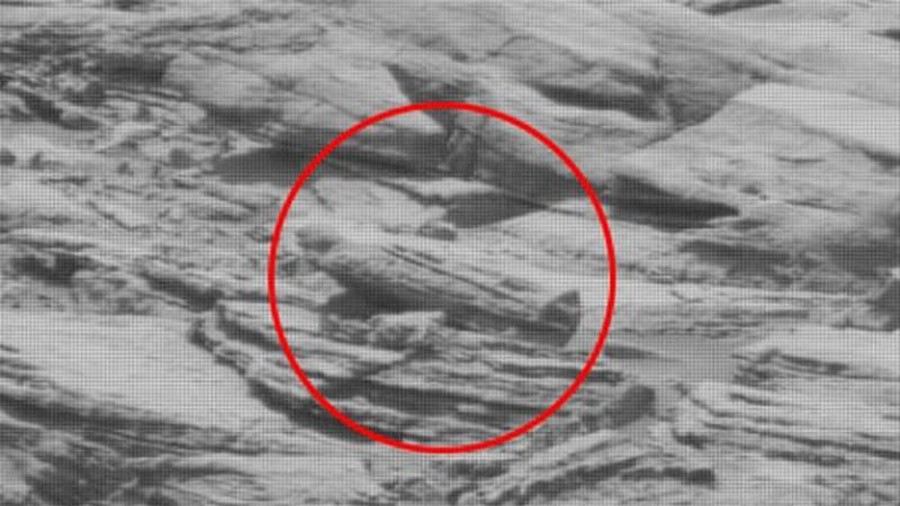







 3D map of the largest universe ever
3D map of the largest universe ever 10 strange and interesting facts about the universe you may not have heard of
10 strange and interesting facts about the universe you may not have heard of SpaceX's Crew Dragon spacecraft successfully assembled with the ISS station, completely automated
SpaceX's Crew Dragon spacecraft successfully assembled with the ISS station, completely automated Watch live the first SpaceX spacecraft launch event
Watch live the first SpaceX spacecraft launch event Why are microorganisms living 'so tough' on Earth but still hard to survive on Mars
Why are microorganisms living 'so tough' on Earth but still hard to survive on Mars